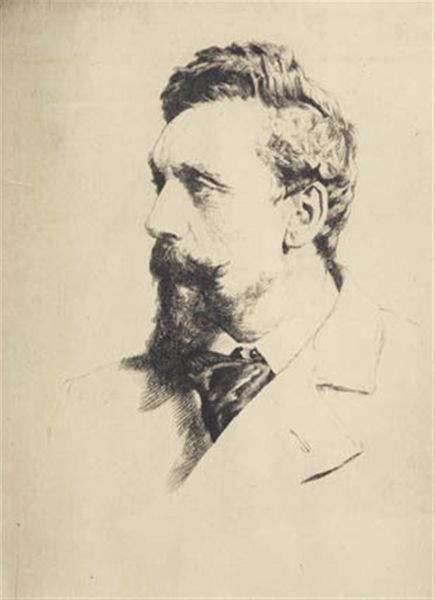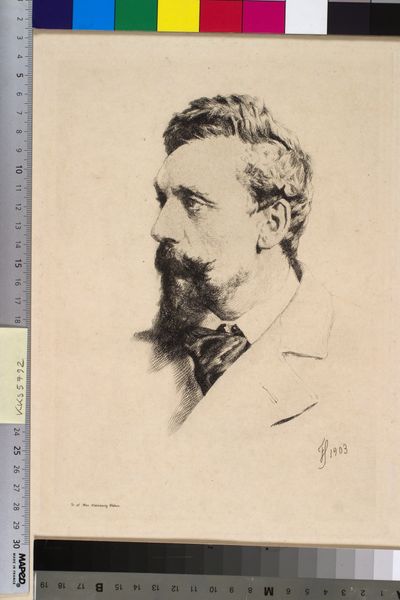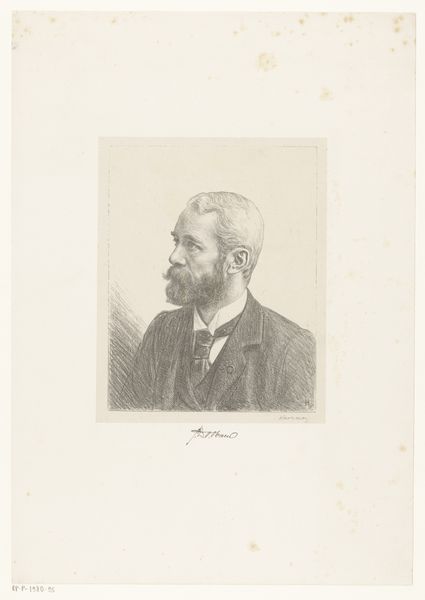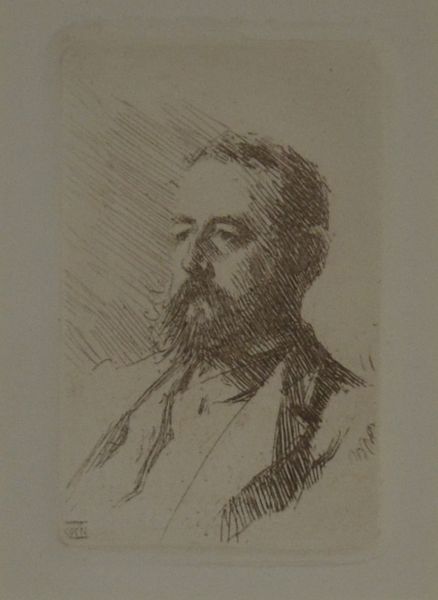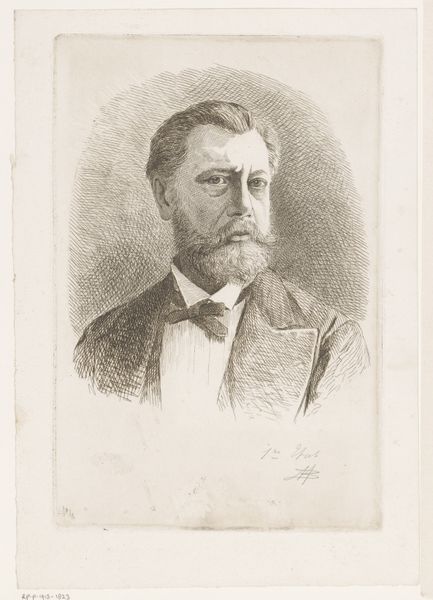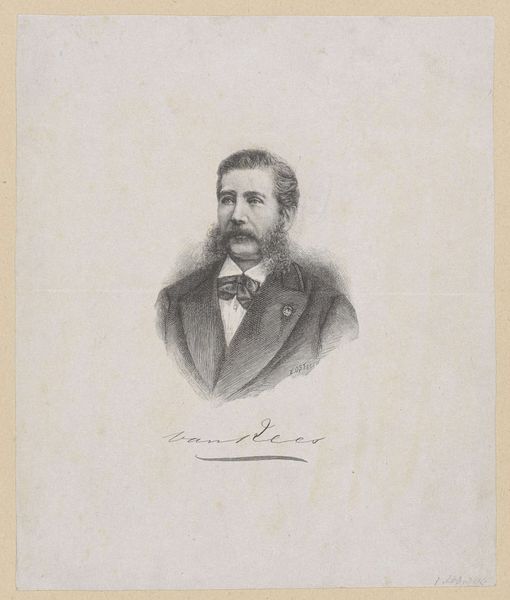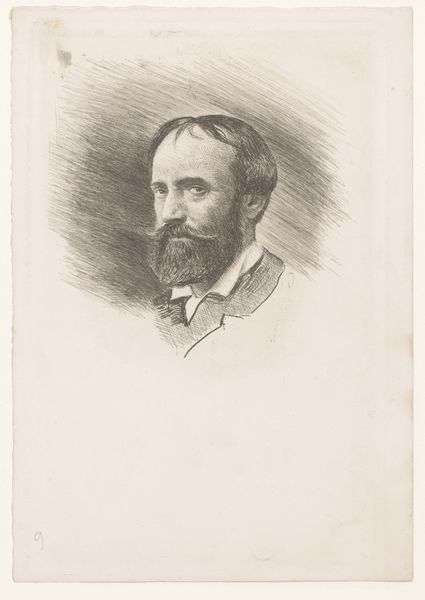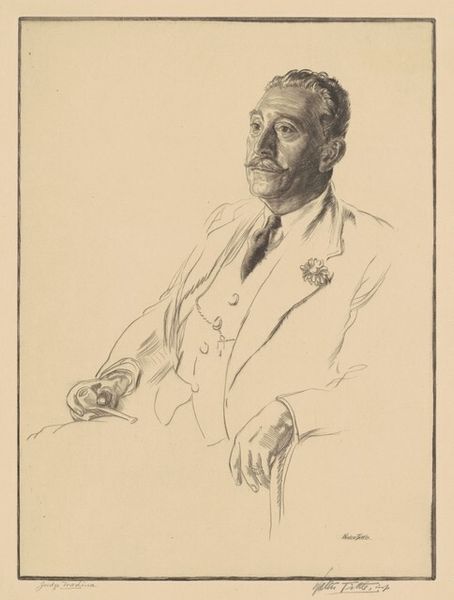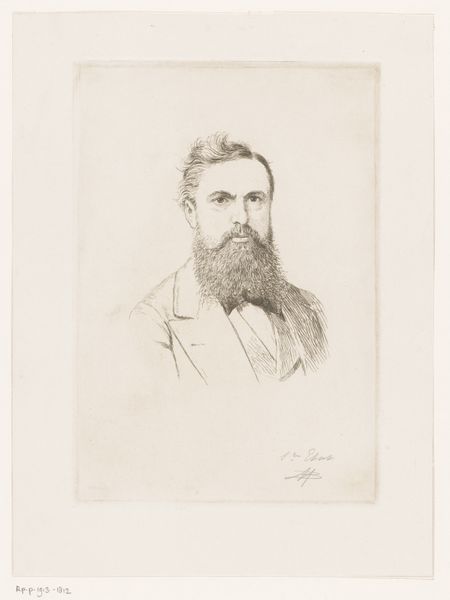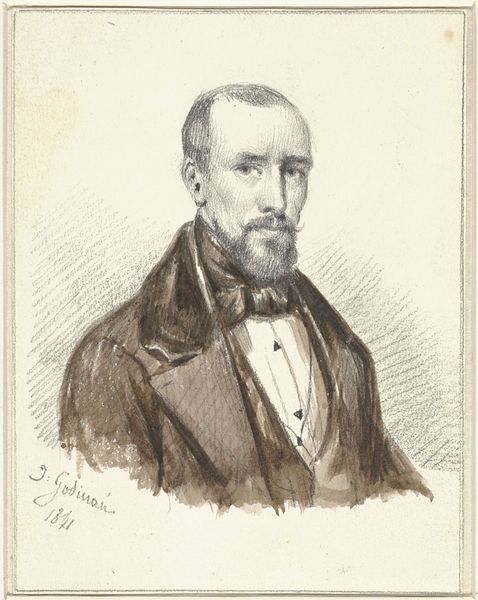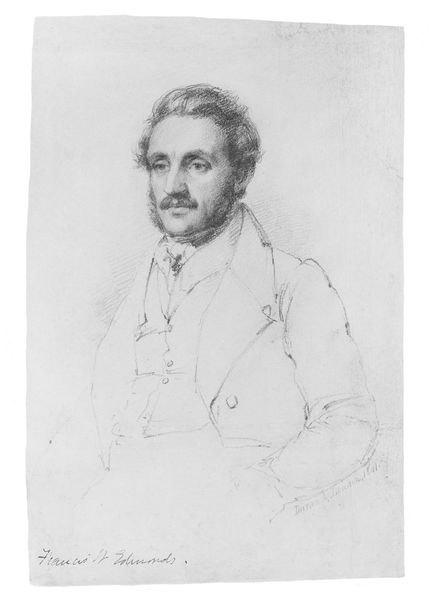
drawing, print, pencil
#
portrait
#
drawing
# print
#
pencil drawing
#
pencil
#
animal drawing portrait
#
portrait drawing
#
academic-art
Dimensions: plate: 30.48 × 25.4 cm (12 × 10 in.)
Copyright: National Gallery of Art: CC0 1.0
Curator: We're looking at Walter Tittle's 1922 portrait of Carlo Schanzer, a member of the Italian Senate. It's rendered in pencil, then reproduced as a print. What strikes you first? Editor: The meticulous detail. The artist really captured the texture of Schanzer’s beard and the way light plays on his face. You can almost feel the paper’s tooth. Curator: Tittle was known for his portraits of prominent figures, often politicians and artists. This work gives us a glimpse into the world of Italian politics in the post-World War I era, reflecting the importance placed on portraying leaders with a sense of gravitas. Editor: The emphasis on graphite here is striking. Consider the choice of this reproducible medium for conveying prestige and power. Pencil is usually relegated to the underdrawing, and its elevation here emphasizes access—the print allows it to disseminate the politician's likeness. Curator: Absolutely. Prints allowed for wider distribution and enhanced political visibility. Think of the history here. Schanzer held several key ministerial positions, so this image functions as a record of someone deeply involved in shaping Italy’s political landscape during a tumultuous time. Editor: The rendering isn’t completely realist. Note the sketchiness around the jacket; it lends itself well to mass production, though. I’d be curious about Tittle's relationship with commercial publishers, to understand better his investment in the art market’s industrial processes. Curator: It is a fascinating avenue for investigation, as this print underscores the interplay between art, politics, and public image-making during the early 20th century. The visual vocabulary of leadership matters—Schanzer, a critical figure in that government, has a specific image in mind. Editor: Precisely, and Tittle used an "accessible" medium like pencil to achieve an “official” purpose: solidifying Schanzer’s position through mass media. I am curious, though, how the drawing aesthetic and production would influence working-class individuals, not just elite consumption. Curator: A very good question about audience—certainly further investigation is needed. Thank you for highlighting the intersections between medium, message, and power in this striking portrait. Editor: It's crucial that the social contexts of both material production and image consumption remain important topics for future visitors.
Comments
No comments
Be the first to comment and join the conversation on the ultimate creative platform.
